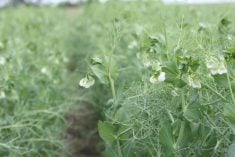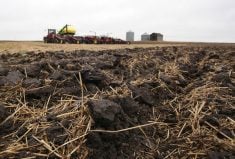Head of Nutrien says the industry must embrace innovation, collaboration and acceleration to continue making progress
The agriculture sector is making strides in reducing its carbon footprint, says the head of the world’s largest fertilizer company.
In the United States, overall greenhouse gas emissions increased by 5.2 percent between 2020 and 2021, according to an annual report produced by the U.S. Environmental Protection Agency.
Agricultural emissions dropped by 0.2 percent over that same period after falling 2.7 percent the previous year and 2.2 percent the year before that.
Read Also

Anti-separatist movement targets rural Alberta
Former deputy premier Thomas Lukaszuk’s anti-separatism Alberta Forever Canada petition campaign expects to run full steam ahead into the province’s farming regions
“The agriculture industry was the only tracked category that saw a decrease in emissions over that period,” Nutrien president Ken Seitz said during a presentation at the Ag Outlook Forum hosted by the Agricultural Business Council of Kansas City and Agri-Pulse.
“Agriculture has taken up the cause and reduced greenhouse gas emissions. As an industry we are making progress.”
However, he warned that a status quo approach to food production will not get the industry to where it needs to be by 2050.
The sector has to embrace three priorities — innovation, collaboration and acceleration.
Agriculture has already made tremendous advancements in seed technology and precision tools.
There are genetically modified crops with built-in defenses to disease and drought, autonomous tractors, drones and satellite imagery.
Nutrien sees further potential with digital agronomy, artificial intelligence and biologicals.
Seitz said there also needs to be more cross-sectoral partnerships.
An example is the company’s new partnership with Taranis to provide Nutrien Digital Scout to growers in the U.S. corn belt.
The tool uses drone imagery and artificial intelligence analytics to detect disease or pest pressure to help Nutrien’s crop consultants devise custom pesticide application plans for growers.
As well, the sector needs government regulators around the world to help accelerate change by reducing red tape.
A prime example is the regulation of natural biological pest protection products, which are treated the same as synthetic chemicals.
“It is a long process to get these into the hands of farmers,” said Seitz.
“We need legislators on this continent to work with growers and industry to find a more commonsense approach that can help us meet the targets of productivity and sustainability.”
He would also like to see governments recognize potash and phosphate as critical minerals, a legislative step that would reduce uncertainty about supply of the products.
Seitz said it would be helpful to deal with one regulatory body when seeking approval for a new mine or a new product rather than a myriad of organizations that often have competing agendas.
“There is just so many stakeholders that we are satisfying and so much overlap between government agencies,” he said.
During the question and answer portion of his presentation, Seitz was asked where fertilizer prices are heading. He said prices skyrocketed after Russia invaded Ukraine as growers around the world scrambled to secure supplies.
Prices have come down lately as supplies rebalance, but farmers in Brazil are still holding off on purchasing fertilizer.
“They’re going to have to step back into the market, but they have not re-engaged,” he said.
Normal global potash demand in any given year is about 71 million tonnes. Last year farmers applied 63 million tonnes.
He believes North American prices have stabilized with normal buying patterns and inventories in the U.S. market.
However, he thinks the supply challenges out of Eastern Europe have not fully played out yet in the European Union.
Seitz was also asked to forecast nitrogen fertilizer demand over the next five to 10 years.
He noted that demand is falling in established markets like the U.S., Canada and Australia due to the increased use of soil sampling and variable rate technology.
But in other markets there is potential to expand fertilizer use. For instance, application rates are low in parts of Brazil, and in India farmers are habitually underutilizing nutrients.
“I’d say if you take a global view, crop nutrient use is going to continue to increase in the name of yield,” said Seitz.
















